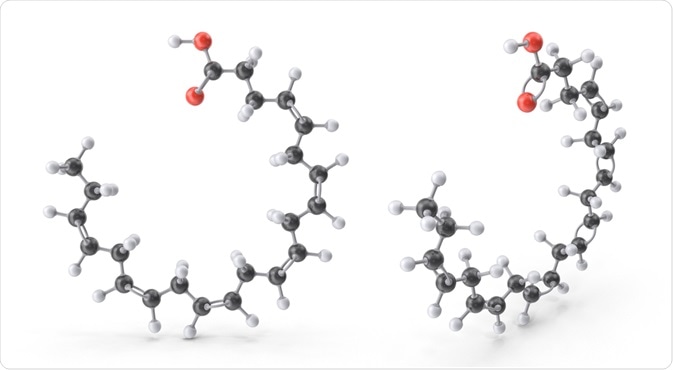A zwitterion is a molecule that has at least two functional groups: one having a positive charge and the other having a negative charge, with an overall charge of zero.

Zwitterion Molecule. Image Credit: DesignBot/Shutterstock.com
The name comes from the German word “zwitter”, meaning hybrid. Zwitterions can form from other molecules called ampholytes, or amphoteric compounds and can act as both an acid and a base.
Amino acids
Amino acids are the most well-known zwitterions. They have an amino group (NH3+) which is positive and a carboxyl group (COO-) which is negative. The R group represents the side chain of different amino acids.
Isoelectric point
Every zwitterion has an isoelectric point (pI). The isoelectric point is the pH at which a zwitterion is uncharged. The pH can affect the charge of a molecule by introducing protons (H+). The amino group of an amino acid is a very effective proton acceptor, so is considered to be basic. The carboxyl group is an effective proton donor and is considered to be acidic.
You can calculate the isoelectric point of an amino acid by taking the average of the pKa’s of the two functional groups. This changes between the 20 different amino acids depending on their functional group (R group).
The average pKa of the amino group is 9 and the average pKa of the carboxyl group is 2, so the average isoelectric point of an amino acid is 5.5. In other words, amino acids in a pH of 5.5 commonly have zero overall charge.
Effect of pH
When amino acids are in a solution of a low pH, a lot of H+ ions are present, which the amino group accepts and the molecule becomes positively charged.
When amino acids are in a high pH, then they are present in a solution with excess OH- ions, which the carboxyl group donates a proton to, to form H2O, and the molecule becomes negatively charged.
These three diagrams shown are all the forms that an amino acid can be found in, depending on the pH of the solution, due to the zwitterionic properties of amino acids.
Applications of zwitterions
SDS PAGE
One of the most useful applications of zwitterions is in SDS PAGE which is one of the most common practical procedures in molecular biology. It is a form of electrophoresis used to separate protein molecules by molecular mass.
One of the main components of the buffer used in SDS PAGE is glycine. The zwitterionic properties of glycine are essential to separate the proteins using this method.
Different sections of the SDS PAGE have a different pH, meaning that the glycine in the buffer has a varying charge in different locations. The charged and uncharged glycine is used in tandem with chloride ions present in the buffer to ensure that all proteins form concentrated bands, and migrate across the gel at the same time.
Zwitterionic polymers
Zwitterionic polymers are long molecules that contain a positively and negatively charged functional group at either end. One of their main uses is through their antifouling properties where they prevent the build-up of microbial adhesion and biofilm formation.
The antifouling properties of zwitterionic polymers are useful in two main fields: the medical industry, medical implants, and drug delivery; and in the marine industry to prevent subaquatic organisms from building up on boats and piers.
Further Reading